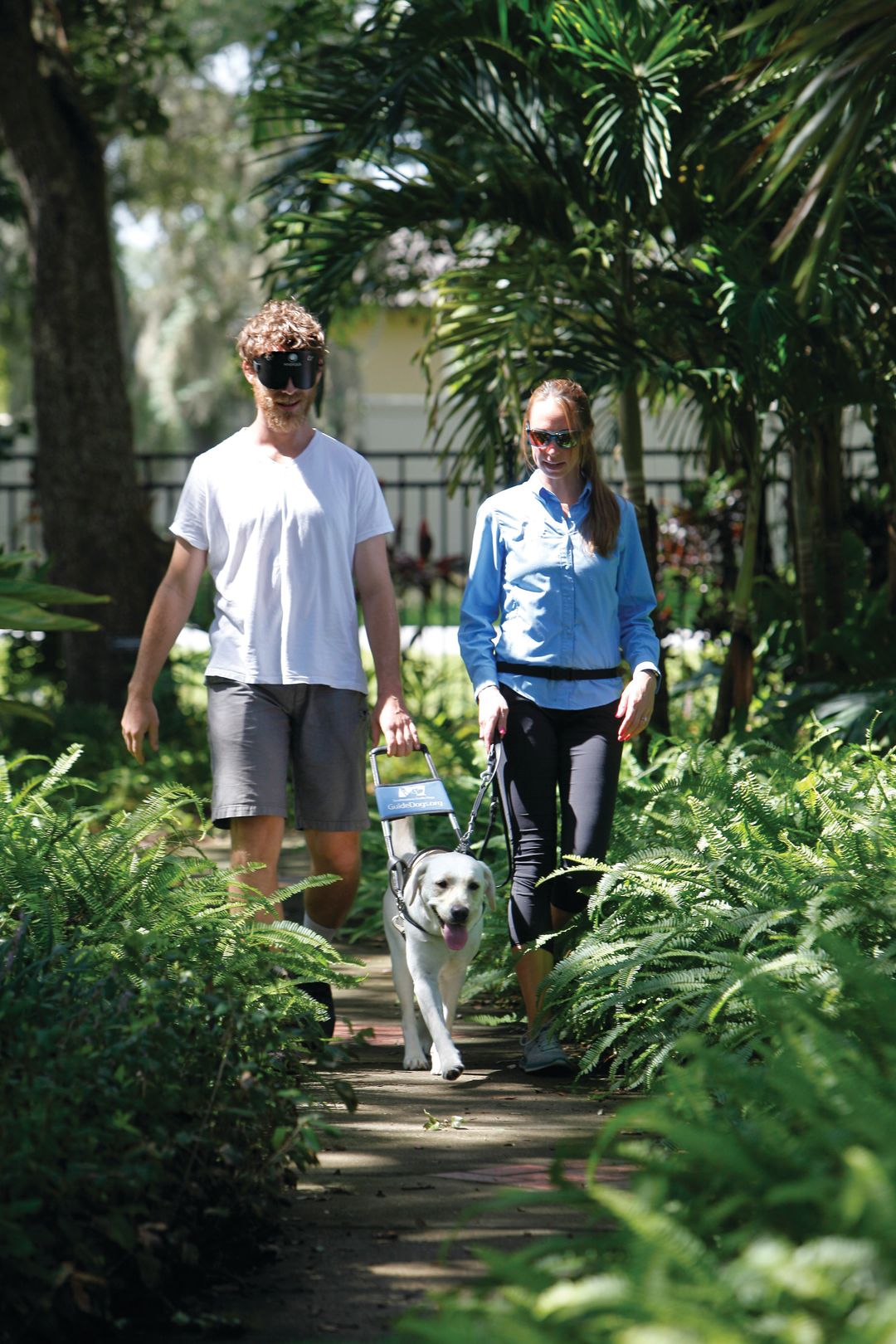This is What It's Like to Work With a Guide Dog

Our reporter walks with a guide dog.
Image: Gene Pollux
Before I was blindfolded, I didn’t bother to take mental notes of the winding, shaded pathways at Southeastern Guide Dogs in Palmetto. Not because I thought it would be truer to a blind person’s experience of navigating the world without visual cues, but because I was distracted by Eula, the 2-year old, platinum-blonde Labrador retriever.
I’ve always been a sucker for a dog’s infinite well of joy. A dog treats every event with equal ecstasy; scratch No. 345 is as wonderful as scratch No. 1. I happily let Eula slobber all over me. But Eula is no normal dog. She is the product of two years and tens of thousands of dollars worth of intensive training and selective breeding at Southeastern Guide Dogs, a 36-year-old nonprofit that has just added a new training center, Canine University, that is as well-equipped as any rehab center for people (massage, electro acupuncture and aroma therapy included), and residence halls for the visually impaired. They’ve also expanded service to veterans to include emotional support dogs, Gold Star family dogs and military family support dogs.
Eula is nearing the end of her time here, soon to be gifted for free to a handler who suffers from visual impairment. But today, she’d guide me under simulated conditions.
I pulled a blindfold, which was like a large, padded sleep mask, over my face. I thought my senses would be heightened, but the only thing that intensified was primordial fear. You’re going to let a dog be your eyes? But Eula, I was assured, was bred for the task.
“The first guide dogs were German shepherds,” Titus Herman, Southeastern’s CEO, told me. “They were used to help soldiers returning from World War I.” But shepherds fell out of favor for Labradors and golden retrievers “because of their temperament, health and size. German shepherds are too loyal to just one person,” Herman says. Service dogs change hands throughout their lives, from puppy handlers to trainers to foster families to the eventual handler they’ll spend their whole lives with. “Labs can bond again and again,” says Herman.
I reached for Eula’s harness with my left hand, which was more like holding the handle of a rolling suitcase than walking around with a leash. Eula remained on my left side. To put her on my right would confuse her, like forcing a professional basketball player to play with a football. Normally, future handlers stay at the campus for extended periods of time (20 days) to get accustomed to their animal. I’d have 30 minutes.
Marisa Gerlach, a trainer at Southeastern for 15 years, told me to instruct Eula to move by raising my right arm level to my shoulder and saying, “Eula: forward.” Gerlach says the dogs here understand 40 different commands. I gave the command. There was a slight delay, and then I felt the tug of the handle connected to Eula’s jacket. I walked like I was in a dark room at night searching for a light switch.
Eula and the other 150-250 dogs here are taught “intelligent disobedience,” meaning to disobey their handlers if they sense danger. If their handler is about to walk off a cliff, the dog will put its body between handler and hazard, even if the handler commands the dog otherwise.
Gerlach warned me that we were approaching a curbed ledge. She said that Eula would stop me before I stepped down. She did. I began to feel more comfortable with Eula. She bumped her body into me when I wasn’t following properly. She never stopped to investigate the thousands of smells around her. I could feel her seriousness. She was a little blonde light in the darkness.
My pace picked up, and the subconscious lizard part of my brain relaxed. When we finished, I took the blindfold off to look where we had walked. She had safely led me through 30 minutes of my life. I can’t even trust my friends to look up from their phones to cross the street.
A word to the wise: Whenever you see a service dog with a jacket on, that means the dog is working. Don’t pet it. The dog won’t enjoy it. But when the jacket is off, it’s play time. Marisa took Eula’s jacket off and she collapsed onto the ground to have her belly rubbed.



